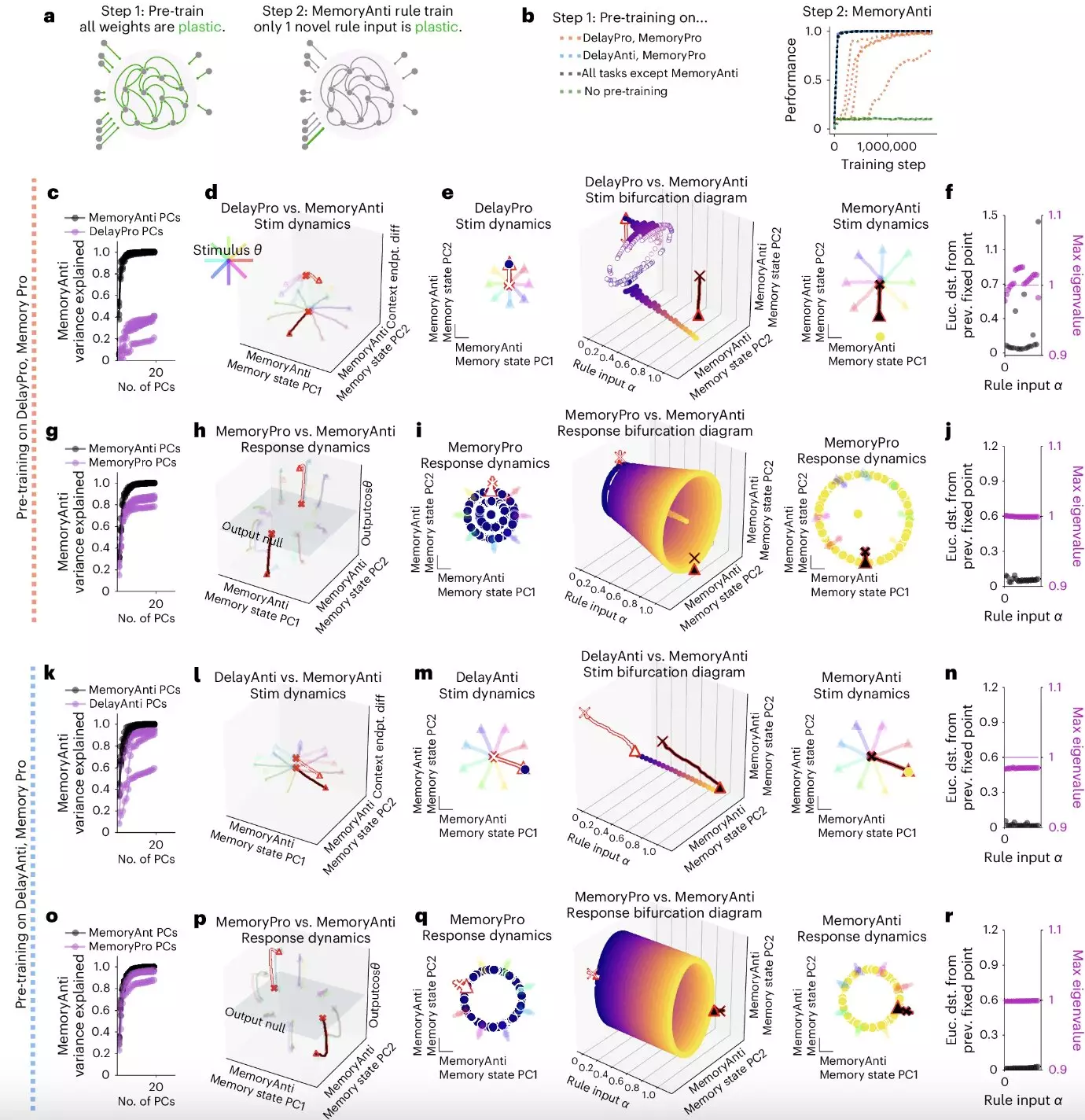Cognitive flexibility, the ability to rapidly switch between different thoughts and mental concepts, is a remarkable human capability that supports various tasks such as multitasking and adapting to new situations. Despite the advancements in artificial intelligence (AI) systems, they still lack the same level of flexibility as humans in learning new skills and switching between tasks. Researchers have been exploring how biological neural circuits support cognitive flexibility to potentially enhance AI systems in the future.
In a recent study conducted by researchers from New York University, Columbia University, and Stanford University, a neural network was trained to perform 20 related tasks. The focus was on understanding the mechanisms behind cognitive flexibility and how neural networks can handle multiple tasks efficiently. The study aimed to identify a computational substrate within neural networks that enables modular computations, leading to intelligent behavior.
The researchers identified “dynamical motifs” as recurring patterns of neural activity that implement specific computations through dynamics like attractors, decision boundaries, and rotations. These motifs were found to be essential in allowing neural networks to perform modular computations across different tasks. In convolutional neural networks, clusters of units were responsible for implementing dynamical motifs, showcasing the importance of positive unit activation functions.
Lesions to the units responsible for implementing dynamical motifs were shown to negatively affect the neural network’s ability to perform modular computations. The researchers found that motifs could be reconfigured for fast transfer learning after an initial phase of learning, highlighting their significance in compositional computation. The dynamical motif framework establishes itself as a fundamental unit that bridges the gap between individual neurons and the network as a whole.
The study’s findings on dynamical motifs in convolutional neural networks have profound implications for both neuroscience and computer science research. By understanding the neural processes that contribute to cognitive flexibility, researchers could develop new strategies to emulate these processes in artificial neural networks. The newfound knowledge could revolutionize the field of AI and lead to the development of more flexible and adaptable systems.
The recent study sheds light on the importance of dynamical motifs in neural networks for enabling cognitive flexibility and efficient multitasking. By identifying the computational substrate within neural networks that supports modular computations, researchers have taken a significant step towards understanding the complexities of human intelligence. The insights gained from this study have the potential to drive future advancements in AI research, ultimately bridging the gap between human cognitive abilities and artificial intelligence systems.


Leave a Reply